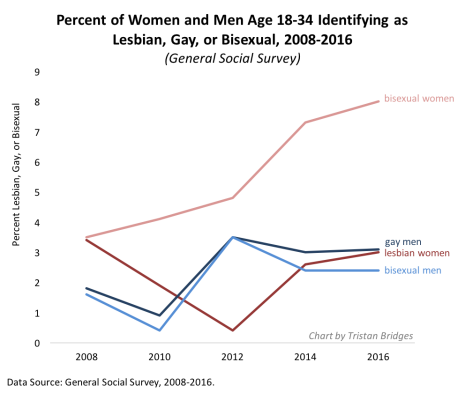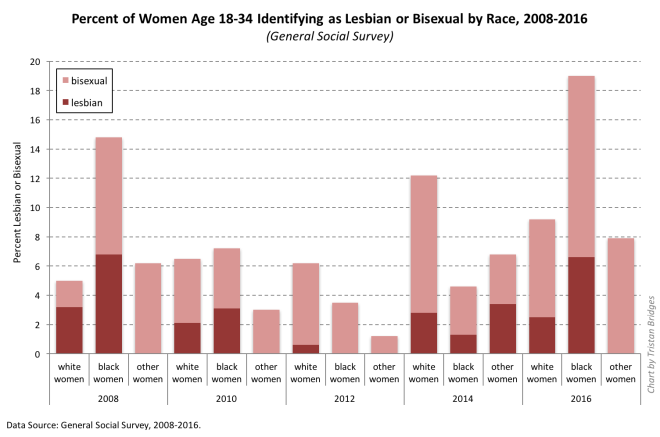Dear readers,
This summer marks Sociological Images’ ten year anniversary. I founded the website with Gwen Sharp and have been at its helm ever since. With the support of the University of Minnesota (whose servers we used to crash); Doug Hartmann and Chris Uggen at The Society Pages (who have built an incredible site for SocImages to live on); Jon Smadja’s technical expertise (keeping it all humming); hundreds of insightful guest bloggers; and regular contributors like Jay Livingston, Philip Cohen, Martin Hart-Landsberg, and Tristan Bridges (who also did a grueling three month stint as Guest Editor), the site grew to a size that I never imagined possible. It reached at its peak over a half million visitors a month, boasts an archive of over 5,000 posts, and enjoys 162,000 social media followers. I am beyond grateful to my community of professional sociologists and to the sociology majors and sociology-curious out there in the world, without whom none of this could have happened.
When the site was new, and through 2012, I sat on panels at the American Sociological Association meetings that were titled something to the effect of “Will blogging ruin your career.” It did not. In 2015, Gwen Sharp and I were given the Distinguished Contributions to Teaching Award, the sixth of seven awards we would win for our shepherding of the site. Things changed, and fast. More and more sociologists came online, nearly a thousand of us joined Twitter, and sociology-themed blogs proliferated. Even fancy folk in the discipline started blogging, writing for high-profile news and opinion outlets, and building social media followers. This year a sociologist won a Pulitzer Prize for a book aimed at a — wait for it — general audience.
I am among those who have benefited from this public turn in sociology, the one that Michael Burawoy championed in 2004. It gave me the opportunity to speak to wider audiences, become visible to my peers, be recognized for thoughtful (and sometimes not-so-thoughtful) analyses, and a public reputation that led to a general audience book of my own. As the gatekeeper to Sociological Images and its social media, I also held in my hands the power to help other sociologists publicize their work, one that I tried to use liberally. This has been one of the most gratifying parts of being the site’s editor, and also one that I think has attracted much good will. Sociological Images has been, in short, an incredible boon to my career.
At this time, then, with my own career well-launched, it seems greedy to hold onto the reins. So, with this post I announce an editorial change and a new era for Sociological Images. I am so pleased and excited to introduce Evan Stewart as the new Editor and Principal Author. Evan is a late-stage PhD candidate at the University of Minnesota. After years as a board member and now Graduate Editor of The Society Pages, he brings many years of practice under the careful guidance of Chris Uggen and Doug Hartmann, sociologists who bring great wisdom to the practice of public sociology. I am thrilled that Evan is on board and confident that, under his leadership, the site will continue will be enjoyed by sociology-lovers and a resource for all sociologists who want to reach a broader public.
It is bittersweet to go. I will remain on as an occasional contributor (if Evan thinks my guest posts are of high enough quality to merit publication, of course) and share with him the keys to the social media accounts. I have new projects in the works that I am very excited about — many of which, in various ways, were made possible by SocImages — so you haven’t seen the last of me yet. And I will always be grateful to all of you for your part in the incredible journey the last decade has brought.
With that, please welcome Evan Stewart!
——————————-
Hello everyone!
I am honored to be taking up the torch at Sociological Images, and grateful to Lisa for the opportunity. Lisa has built a remarkable legacy with this blog, and I am looking forward to carrying it on into the future.
Sociological Images is the reason I got hooked on public sociology. I found the site late in my undergraduate career at Michigan State University. Lisa and Gwen were kind enough to publish, and later repost, a guest contribution I wrote for a visual sociology class—one that would eventually turn into a chapter for a book from UC Press.
When I started my graduate work in political and cultural sociology at the University of Minnesota, I jumped at the chance to do more public scholarship with The Society Pages. Thanks to Doug Hartmann and Chris Uggen, grad students on the TSP board learn to assess cutting-edge research from all over our field. Bringing this work to the public makes us better writers and scholars. With their support over four years at TSP, I founded and piloted two blogs: There’s Research on That!, which brings social science to the news of the day, and Social Studies Minnesota, which covers UMN research in political science, psychology, mass communication, and beyond.
Doing great research and sharing great research with people go hand in hand. My research at the American Mosaic Project tackles big questions about how people think about who belongs in society—questions that matter to people! This is due in no small part to my wonderful academic advisor, Penny Edgell (who also blogs!), and graduate colleagues like Jacqui Frost and Jack Delehanty,
Now, I am excited to bring my experience to Sociological Images. The site has been a home for honing the sociological imagination for a decade, and I aim to keep it that way. You can expect to see a lot of familiar names as I continue to bring you top-notch blogging about the social world from SocImages’ old friends. I’ll also be producing original content and cross-posting material by the The Society Pages’ graduate editorial board. Look for some new folks from Minnesota in the by-lines, as well as future calls for guest submissions.
There will be more to come in the next few months, but for now say hi on Twitter and stay tuned for the first new posts coming this week!









